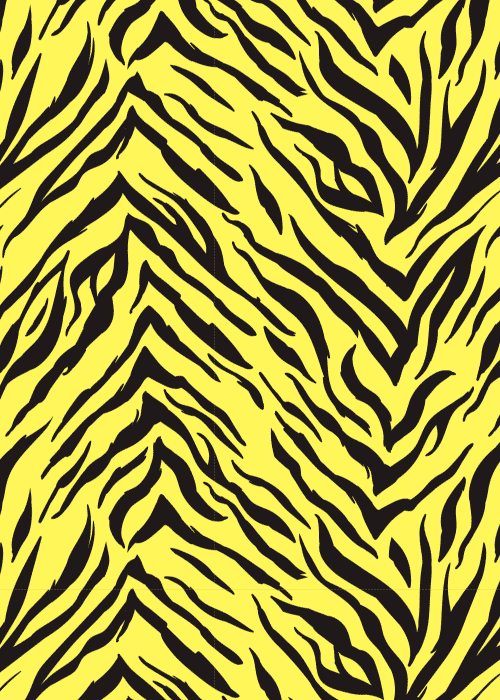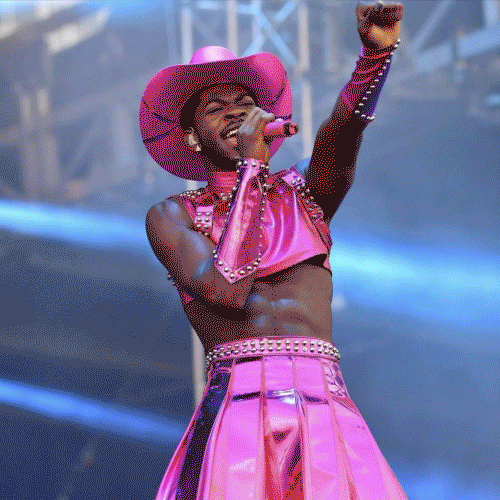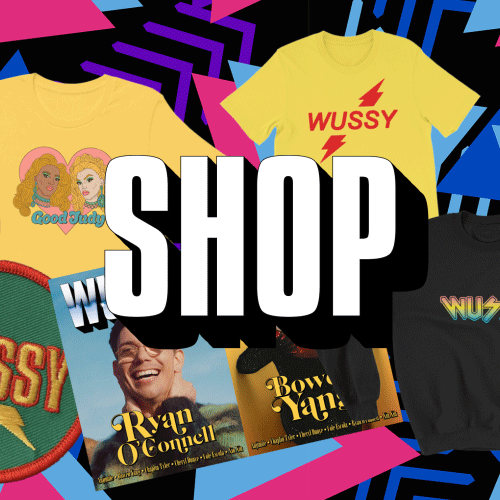Intersectional Activism & Early Gay Liberation in Southwest Virginia
The gay liberation movement of the 1970s was catalyzed by the 1969 Stonewall Riots in New York City. Leading the Stonewall Riots were transwomen of color, including Marsha P. Johnson and Sylvia Rivera. Their protests against police raids on gay bars spurred a fervor for gay liberation across the United States—a fervor which continued throughout the 1970s in unison with other civil rights movements, including black liberation and the feminist movement. In Southwest Virginia, nascent gay rights movements formed during the early 1970s in the region’s urban hub—Roanoke, Virginia. Unlike the Stonewall Riots, gay lib in Roanoke was spearheaded primarily by white, cisgender gay men.
In 1971, Roanoke’s first gay rights organization, The Gay Alliance of the Roanoke Valley (GARV), was founded in the city’s gayborhood, Old Southwest. In 1977, another gay rights organization, Free Alliance of Individual Rights (FAIR), was founded in Roanoke. Both of these organizations were influential but short lived, lasting an average of two years. During their short lifespans, they accomplished amazing feats in the midst of an impossibly conservative political and social environment. Their efforts brought disparate communities of lesbians and gay men together for collective action, and led to Roanoke’s first structured protests against homophobia and institutionalized oppression. They also published newsletters that created, for the first time, a sense of gay community in Southwest Virginia. In these newsletters, activists cracked down on police harassment, critiqued local and national politics, highlighted Roanoke’s gay spaces, and provided much needed support in an environment in which gay people often felt isolated and alone. In doing gay activism, these early activists put themselves at great risk of being ostracized or subjected to homophobic violence, and the stigmas and prejudices they faced in the 1970s South could have contributed, in part, to their eventual demise.
However, Roanoke’s gay liberation movement, and many other similar movements in the South, also suffered from a lack of crucial diversity in group leadership. Led by and therefore primarily concerned with the issues that white, cisgender gay men faced during the 1970s, these groups often failed to adequately address the experiences of lesbians, people of color, and transgender and gender nonconforming individuals. Their activism, while effective and influential, did not encompass the rainbow of queer identities that fits under the modern LGBTQ+ umbrella. While looking back and celebrating the foundations these groups laid, it is also necessary to acknowledge the way their concept of gay liberation left out queer people who face compounding axes of oppression—despite the fact that gay liberation was nationally instituted by queer people who were also black and latinx transwomen. Understanding the gaps in early activism can aid modern activist as they grapple with how to make their efforts intersectional and therefore successful at uniting entire communities in the pursuit of LGBTQ+ liberation.
Lesbians in Gay Activism
In Roanoke, both FAIR and GARV primarily served the interests of cisgender, white gay men. Though some lesbians were involved in these groups, they were outnumbered by men. Predictably, male leadership in early activist groups skewed activist agendas towards distinctly male issues. Both FAIR and GARV devoted much of their time to addressing police crackdowns on cruising in public parks and supporting the city’s gay bars. During the 1970s, hundreds of gay men were arrested for soliciting sex from other men around Roanoke’s Elmwood Park. This sparked understandable outrage from activists, but some gay women felt overlooked. According to a 1977 Roanoker article on gay life in Roanoke, lesbians didn’t cruise; instead, they met in private houses for private parties, or they participated in sporting events together. Some lesbians frequented the city’s several gay bars, but these bars existed primarily to entertain white, cisgender gay men, especially in the gender and race segregated 1970s South. There were no distinct lesbian bars or public meeting spaces in Roanoke during the 70s, so lesbians had to carve out their own spaces within a male-dominated gay culture. By focusing primarily on cruising and gay bars, groups like FAIR and GARV contributed to the sense of isolation many lesbians felt within the gay community.
As second wave feminism made waves across America, lesbian feminists began to consider the way their sexualities were influenced by their womanhood. Accordingly, FAIR and GARV attempted to make space for gay women within their organizations. For instance, The Virginia Gayzette, a newsletter published by FAIR, began including a “Women’s Line” column in 1978 to address women’s issues within the gay community. However, a byline to women within a male-dominated organization could not create foundational change. Foundational inequalities within activist communities led some lesbians to seek out separatist groups. In the 1980s, Roanoke lesbians started the all-woman group First Fridays and developed their own newsletter called Skip Two Periods. They held retreats structured around lesbian women’s interests and lesbian herstory, and worked only minimally with gay men. This trend towards separatism existed elsewhere in the South. In Rebels, Rubyfruit, and Rhinestones, James T. Sears describes the way second wave feminism made southern lesbians aware of the “double oppression” they faced as gay women, and the conflicting desire to, on one hand, unify and combat the raging 70s culture war, and, on the other, separate from male-dominated institutions and focus on women’s issues specifically. A community member writing to The Virginia Gayzette in 1972 expressed frustration towards the cliquish nature of Roanoke’s activist communities and the lack of solidarity between gay men and women, saying “where is this brother and sister business?” Considering the omnipresence of misogyny, it’s easy to see how lesbian separatists could have been blamed for the lack of cohesion within gay activist communities in Roanoke and in the South at large, but separatism was a response to the longstanding lack of inclusion that lesbian women faced in gay activist organizations. By failing to address the concerns of lesbians, gay activists necessitated the need for separate activist communities.
People of Color in Gay Activism
Like many southern cities, Roanoke has been largely segregated since its founding in the late 19th century. Roanoke’s historically white and black districts are split by train tracks that cut through the city’s center. The oldest black neighborhood, Gainsboro, had an early history of being unduly associated with vice, crime, and blight by the city’s white residents and government—an association which ultimately led to the destruction of thousands of black homes and businesses during the urban renewal campaigns of the 1950s and 60s. This historical segregation and systemic disempowerment of Roanoke’s black community has made black participation in gay activism difficult. Though Roanoke City is still heavily segregated, it was even more so in the 1970s when the city’s gay liberation movement first made impact. Both GARV and FAIR were led entirely by white activists, and Roanoke’s gayborhood—Old Southwest—was over 98% white according to the 1970 federal census. Roanoke’s earliest gay bars were also segregated, catering to majority-white crowds who may have held hostile attitudes towards blacks. In an oral history interview with Dan Jones, a white gay man from Roanoke, he describes having almost never seen any black patrons at Roanoke’s oldest gay bar—The Trade Winds—during its heyday in the 60s and 70s. Considering the overwhelming whiteness of Roanoke’s gay scene, queer black people may have felt unwelcome or unwanted. And though newsletters like The Virginia Gayzette suggest some gay activists were sympathetic to or even drew inspiration from the black civil rights movement, Roanoke’s gay community was not uniformly accepting. Another oral history interview given by Don Muse—a black gay man from Roanoke—describes racism in the local gay community directed at interracial couples, and the frustrating “double whammy” of being gay and black in a small southern town.
Black exclusion in white gay communities existed (and still persists) throughout the South. According to James T. Sears in Rebels, Rubyfruit, and Rhinestones, it was common for southern gay bars to restrict the entry of black patrons during the 1970s by requiring several forms of identification or raising the cover charge. These hurdles served to uphold segregation which, in turn, created a distinct black gay culture in many cities. In his book Sweet Tea, E. Patrick Johnson details the way black queers navigated being gay and/or gender non-conforming within black communities. He describes the importance of respectability and conforming to religious mores as potential obstacles to “coming out” and becoming involved in community activism. Though black queer people were often accepted as a matter of fact by family members and their communities at large, to “put one’s business in the street” was frowned upon. Thus, queer blacks may have been “out” in some respects (openly living with a partner, wearing gender nonconforming clothing) but furtive about their sexuality or gender identity in general. Being queer, black, and an activist entailed severe risks—within the black community and outside of it. Though transwomen of color ushered in the age of gay liberation by leading the Stonewall Riots in New York City, queer black southerners faced hurdles finding space within that very movement.
Trans* People in Gay Activism
Roanoke’s first transgender support group came about in the mid-1990s, some twenty years after the gay liberation movement. Groups like FAIR and GARV didn’t broach trans* issues whatsoever, and 1970s culture hardly had the language to seriously discuss trans* identity. In 1977, Roanoke City introduced an ordinance to ban transvestite sex workers that did business in the market district—“Market Queens,” as the local newspaper called them—from working in the city square. Throughout the 1970s, countless “Market Queens” had been arrested for prostitution, and the city police department wanted to root the practice out. The Queens, on the other hand, felt they were being harassed. Local gay activist groups didn’t address the issue, and the gay community in general was hostile towards “drags” for fear of the police attention they attracted. The majority of local gay bars had “no drag” policies during the 70s, in which they required patrons to wear “proper gender” clothing. Roanoke’s oldest gay bar—The Trade Winds—allowed drag on Halloween only. In a letter penned to The Big Lick Gayzette (GARV’s newsletter) in 1971, one patron described how important this annual event was to her: “I really enjoyed myself for the first time in many months. And I saw a lot of other people there who were enjoying themselves, too. I just wanted to say thank you for giving us all a chance to ‘let our hair down’ and enjoy ourselves.”
In an oral history interview, Rissa—a black transwoman from nearby Lynchburg—speaks to how isolating being transgender in Southern Virginia could be. She describes never knowing or seeing other transgender people, and therefore lacking a sense of community. Badly wanting a gender transition, she committed forgery and burglary to afford treatments, and ended up spending several years in prison. For Rissa and many others, being open about being transgender meant being vulnerable to backlash and abuse. In 1992, The Roanoke Times profiled another trans* woman—referred to as a “transvestite” by the press—named “Samantha” who worked in a brothel in Old Southwest. She was mistreated by an abusive Madame, and ended up becoming an informant for the local police, who raided the brothel and literally banished the owners from the city. Speaking to why she went into sex work, Samantha said it was the only occupation that permitted her to wear “drag,” and that the pay was hard to pass up. By her account, Roanoke’s gay scene was transphobic and hostile to sex workers. The gay men she dated resented her for wearing women’s clothing, telling her “if I wanted a woman, I’d go get a real woman.” To a trans* woman like Samantha, both the gay community and society at large were unfriendly and intolerant, and gay activists continually neglected trans issues and/or outright failed to acknowledge transgender identity. This made the creation of support groups geared specifically towards transgender experiences all the more vital.
Gay Activism Today
Since the 1970s, LGBTQ+ activism has become more inclusive and all-encompassing, having been informed by feminism, the transgender rights movement, and the civil rights movements for people of color. The modern LGBTQ+ umbrella acknowledges a host of queer identities—from bisexual to intersex to agender and everything in-between. In turn, activist communities have become more diverse. However, in Southwest Virginia and throughout the South, there is still much work to do to ensure that LGBTQ+ liberation is intersectional. In Roanoke, activists still struggle to see through decades of segregation and racism in order to reach out to black LGBTQ+ communities. And despite the increased visibility of black LGBTQ+ people, trans people, and lesbians within local activist circles, most of Roanoke’s queer history is still monopolized by the perspectives of white and cisgender gay men. To remedy this, modern activists must find a new way of looking at both the past, present, and future: one that is mindful of the fact that the gay liberation movement would not have landed in The South without the efforts of the LGBTQ+ community’s most marginalized members, including transwomen of color. If liberation is to become a reality, we must all work to preserve and amplify marginalized perspectives.
----
RM Barton is a writer and activist living in Roanoke, Virginia. Originally from Maryland, she moved to Southwest Virginia for school some five years ago, and has since become invested in queering southern space. She is the co-lead of The Southwest Virginia LGBTQ History Project and the publisher of The Southwest Virginia LGBTQ History Project Zine, which aims to illuminate queer history through queer art and storytelling. She blogs at rmbartonblog.wordpress.com
Archive
- February 2025
- November 2024
- October 2024
- September 2024
- August 2024
- July 2024
- June 2024
- May 2024
- April 2024
- October 2023
- July 2023
- June 2023
- May 2023
- April 2023
- March 2023
- February 2023
- June 2022
- April 2022
- March 2022
- January 2022
- December 2021
- October 2021
- September 2021
- August 2021
- July 2021
- June 2021
- May 2021
- April 2021
- March 2021
- February 2021
- January 2021
- December 2020
- October 2020
- September 2020
- August 2020
- July 2020
- June 2020
- May 2020
- April 2020
- March 2020
- February 2020
- January 2020
- December 2019
- November 2019
- October 2019
- September 2019
- August 2019
- July 2019
- June 2019
- May 2019
- April 2019
- March 2019
- February 2019
- January 2019
- December 2018
- November 2018
- October 2018
- September 2018
- August 2018
- July 2018
- June 2018
- May 2018
- April 2018
- March 2018
- February 2018
- January 2018
- December 2017
- November 2017
- October 2017
- September 2017
- August 2017
- July 2017
- June 2017
- May 2017
- April 2017
- March 2017
- February 2017
- January 2017
- December 2015
- November 2015
- October 2015
- September 2015
- August 2015
- July 2015
- June 2015
- May 2015
- April 2015











